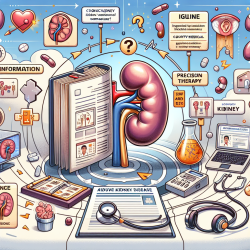Introduction
Frontotemporal dementia (FTD) is a complex and challenging condition that affects cognitive and behavioral functions. With its diverse clinical presentations, FTD often poses significant diagnostic challenges for practitioners. However, a recent study titled Differential Diagnosis of Frontotemporal Dementia Subtypes with Explainable Deep Learning on Structural MRI offers promising insights into improving the accuracy of FTD diagnosis using cutting-edge technology.
The Study at a Glance
The study employed a deep neural network (DNN) to differentiate between three subtypes of FTD: behavioral-variant FTD (bvFTD), semantic variant primary progressive aphasia (svPPA), and nonfluent variant PPA (nfvPPA). Using structural MRI data from 277 patients, the researchers developed a multi-level feature embedding framework that achieved a balanced accuracy of 0.80 for bvFTD, 0.82 for nfvPPA, and 0.89 for svPPA.
How Practitioners Can Benefit
Practitioners can leverage the findings of this study to enhance their diagnostic skills in several ways:
- Incorporate Deep Learning Tools: By integrating deep learning frameworks into their diagnostic process, practitioners can achieve more accurate differentiation of FTD subtypes, leading to better-targeted interventions.
- Focus on Structural MRI: The study highlights the importance of structural MRI in identifying distinct patterns of atrophy associated with different FTD subtypes. Practitioners should consider incorporating MRI-based assessments into their diagnostic toolkit.
- Embrace Explainable AI: The use of explainable AI techniques, such as integrated gradient analysis, allows practitioners to understand the underlying factors contributing to the DNN's predictions, enhancing the transparency and reliability of the diagnostic process.
Encouraging Further Research
While the study presents promising results, it also opens avenues for further research. Practitioners and researchers are encouraged to explore the following areas:
- Expand Sample Sizes: Larger and more diverse datasets can improve the generalizability of the findings and refine the DNN's accuracy across different populations.
- Incorporate Multimodal Imaging: Combining structural MRI with other imaging modalities, such as diffusion tensor imaging (DTI) or functional MRI (fMRI), could provide a more comprehensive understanding of FTD subtypes.
- Explore Genetic and Pathological Correlates: Integrating genetic and pathological data with neuroimaging findings could enhance the understanding of FTD's underlying mechanisms and improve diagnostic precision.
Conclusion
The study demonstrates the potential of deep learning and structural MRI in improving the differential diagnosis of FTD subtypes. By embracing these innovative approaches, practitioners can enhance their diagnostic capabilities and contribute to the development of more effective interventions for individuals with FTD.
To read the original research paper, please follow this link: Differential diagnosis of frontotemporal dementia subtypes with explainable deep learning on structural MRI.










